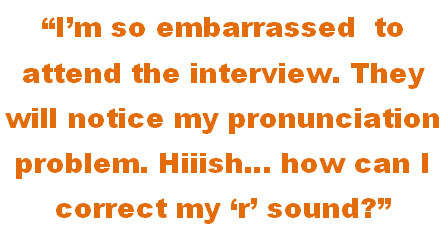
Do you have the same problem? Or do you have a child who has difficulty to pronounce the /r/? A man came to see me a few years ago to express his embarrassment due to his difficulty to recite the Al-Quran perfectly although he is becoming a father. He tried so many things but nothing work so far. Based on his parent’s myth, they suggested him to try to kikis lidah or scrapping the surface of the tongue with coconut leaves assuming that the tongue was so thick and short.
Many researchers and speech language therapist agreed that /r/ was among the hardest sound to improve compared to the other sounds. On the another note, a head researcher and scientific advisor of Speech Buddies, Dennis Ruscello, from the University of West Virginia has identified that 91% speech language therapist are lacking of experience and have encountered at least one failure case to recover case after speech therapy.
I will be sharing a few tips to help you or anyone with difficulty to pronounce the /r/ sound.
What is the /r/ sound?
Basically, the /r/ sound is classified as a thrill sound. The reason is, the vibration of the tongue in the mouth had created the /r/ sound. The exact /r/ sound is based on placement of the tongue and the vibration of air within the oral cavity. If any of the conditions had changed, the speaker will substitute to another sound such as /l/, /y/, /w/ or /gh/. For instance, the word “read” will be pronounce as [lead] and word “rest” pronounce as [yes].
The attached video will show you how to produce the /r/ sound correctly.
? /r/ sound video
Here are easy steps to create /r/ sound:
- Lift tongue up backwards.
- Then, pull tongue downwards a little bit and let it float in the middle of the oral cavity, below the hard palate.
- Project your voice using air to produce a thin /r/ sounds.
A few activities that may help to produce /r/ sound:
- Make a vibration sound using the tip of the tongue on the upper gum. Then, stop the vibration but continue voicing.
- Make a long /l/ sound and at the same time, pull the chin downwards slowly until you hear the /r/ sound.
- Make a long /l/ sound. Then, with a back of a spoon, push the tip of the tongue down to make the /r/ sound.
- Move the tongue along the hard palate starting from the front to the back while producing ‘ah’ sound. Stop the movement when you hear the /r/ sound.
- Think that your tongue is a basket. You need to carry an egg with your tongue. While you are thinking about it, say out loud a long ‘ah’ sound.
When you have successfully produce a consistent /r/ sound, you may combine /r/ with vocals ‘a’,’e’,`i’,’o’ and ‘u’. For example, [ra], [re], [ri], [ro] and [ru]. Repeat the sounds a few times until you master the sound. This video will show you how to produce [ra], [re], [ri], [ro] and [ru].
Video di bawah menunjukkan penghasilan bunyi [ra, re, ri, ro dan ru] sebagai panduan pembaca.
? ra,re,ri,ro,ru sounds video
Finally, continue to practice your /r/ sound at word level at three different placements within a word:
|
Initial position of /r/ words
|
Middle position of /r/ words |
Final position of /r/ words |
|
Rabbit |
Borrow |
Hair |
GOOD LUCK!
References
- Katie Yeh,MA.(2013). How to Elicit (Teach) the /r/ Sound{Part One: Elicitition Techniques}.Diambil pada 28 Ogos 2015 dari http://www.playingwithwords365.com/2013/05/how-to-elicit-teach-the-r-sound/
- Kuster, J. (2015). R sounds. Diambil pada 30 Ogos 2015 dari http://www.mnsu.edu/comdis/kuster2/therapy/rtherapy.html
- Mokhtar Nordin,(2012). Fonetik dan Fonologi. Diambil pada 28 Ogos 2015 dari http://assignment.oum.edu.my/uploadasg/HBML1203SMP/18544/740617125895_136671_final.pdf
| Last Reviewed | : | 28 August 2020 |
| Writer / Translator | : | Rasyikah bt. Mansor |
| Accreditor | : | Fairus bt. Mukhtar |
| Reviewer | : | Nadwah bt. Onwi |







